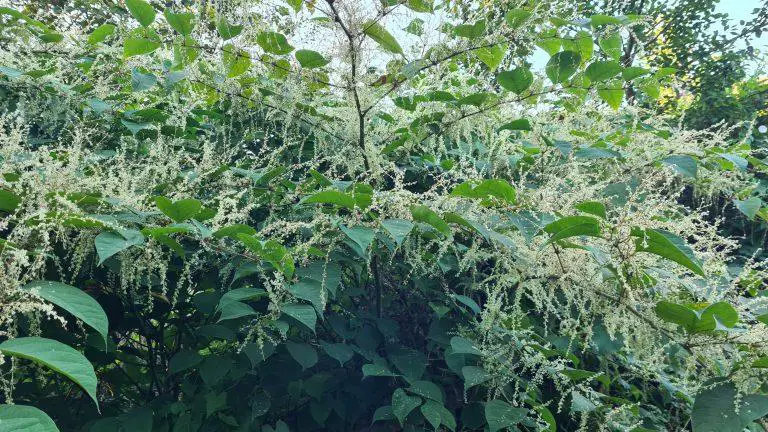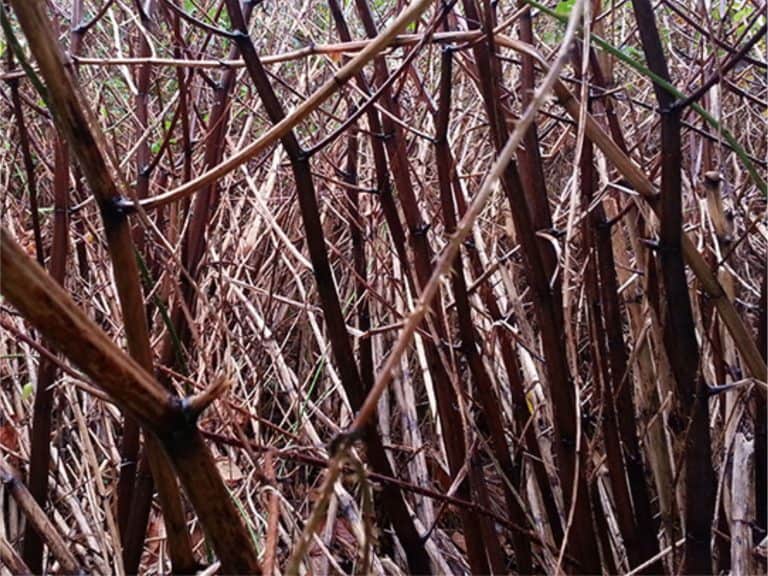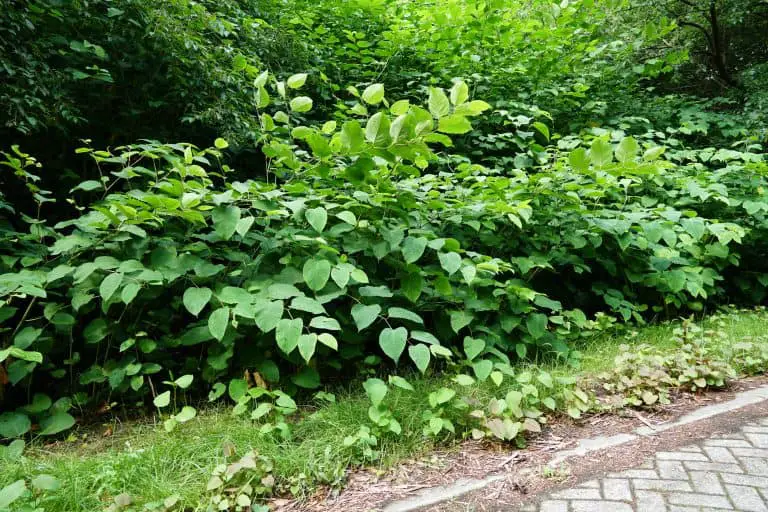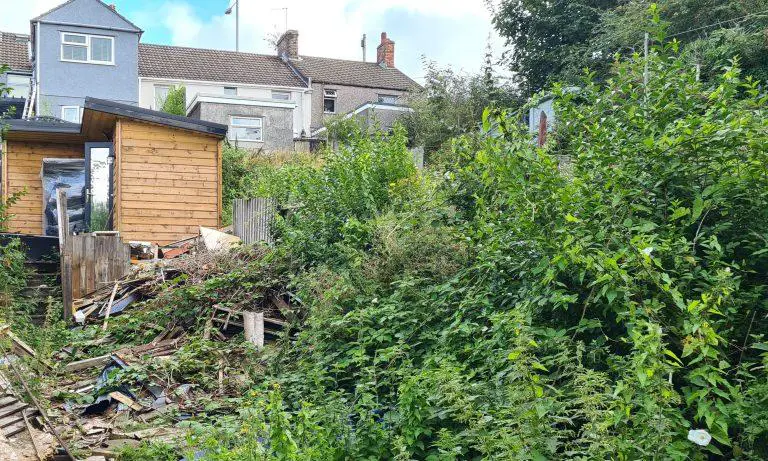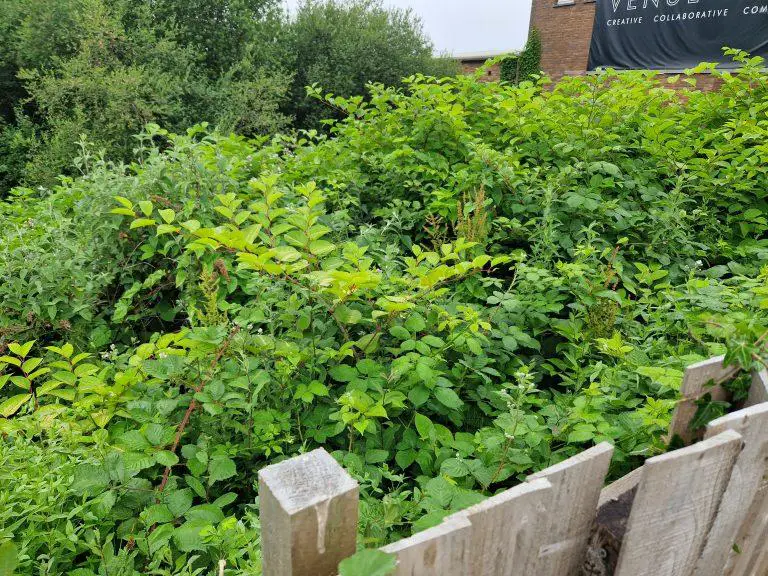Japanese knotweed (Fallopia japonica) has become the most notorious of weeds within gardens and properties across the UK and many other countries.
There is no single doubt that so many beautiful things come from Japan. However, one of the things that the UK might not be grateful for is the Japanese knotweed. What exactly is Japanese knotweed, and why is it a big problem?
Dealing with it has become more of a concern in light of the ever-growing legal and financial costs associated with eliminating it. With more damage to buildings and escalating legal cases being brought before the courts, it comes as no surprise that you should prioritise dealing with this weed as soon as possible.
It was introduced from the Far East to Europe in 1849 and was first recorded in the wild in the United Kingdom in South Wales in 1886.
The plant’s ability to flourish in any part of the country enhanced its popularity in the 19th century upon its arrival. However, it did not take long before the plant started causing havoc across the UK.
Japanese knotweed was widely grown in larger gardens and parks as an ornamental “architectural” plant. It was also thought that local governments and businesses planted it to shore up embankments and pathways, as it was thought to protect the ground from mudslides and movement.
Over the years, the plant has spread to unwanted areas like river streams, railway lines, and office areas, thus damaging properties and other resources. It also prefers disturbed ground, riverbanks, roadsides, wasteland, urban areas and occasionally woodlands.
What is Japanese knotweed?
Japanese knotweed (Fallopia japonica) has a bamboo-like stem with purple speckles and roughly triangular green leaves between 10-15cm long. It has a complex root system of rhizomes, making removal difficult. Roots can grow up to 3 metres deep and 7 metres laterally in all directions.
Japanese knotweed is extremely invasive thus causing damage to properties. It has a bamboo-like stem and white flowers. It grows up to 20 cm a day! It can grow anywhere and spread within a short period.

What does it look like?
Several plants look similar to Japanese weeds, so being familiar with their identity is essential. It is essential to know what it looks like to take quick measures when you notice it around your property. Here are the characteristics of the plant at different times of the year:
How it looks in spring
- During spring, you will see the first signs of Japanese knotweed growth (Around mid-march)
- The plant showcases red-purple shoots that come with rolled-back leaves that reproduce due to the stored nutrients in the rhizomes.
How it looks in summer
- During summer, the plant stem is similar to bamboo. However, it is greener and has purple speckles.
- The canes store water and nutrients to help in plant growth.
- The weed’s leaves are large with pointed tips and are an extension of the stem.
- During the last few weeks of summer, the flowers that are creamy white start to hang in clusters.
How it looks like in autumn
- The bamboo stems begin to darken
- The leaves become enormous and extremely pointed.
- The leaves begin to turn yellow and wilt towards the end of the season.
How it looks in winter
- The plant’s leaves turn brown, and it withdraws back to the rhizomes
- The canes become darker and become wooden stalks that do not compose easily.
- You will notice some shoots growing through the canes during the first few weeks of spring.
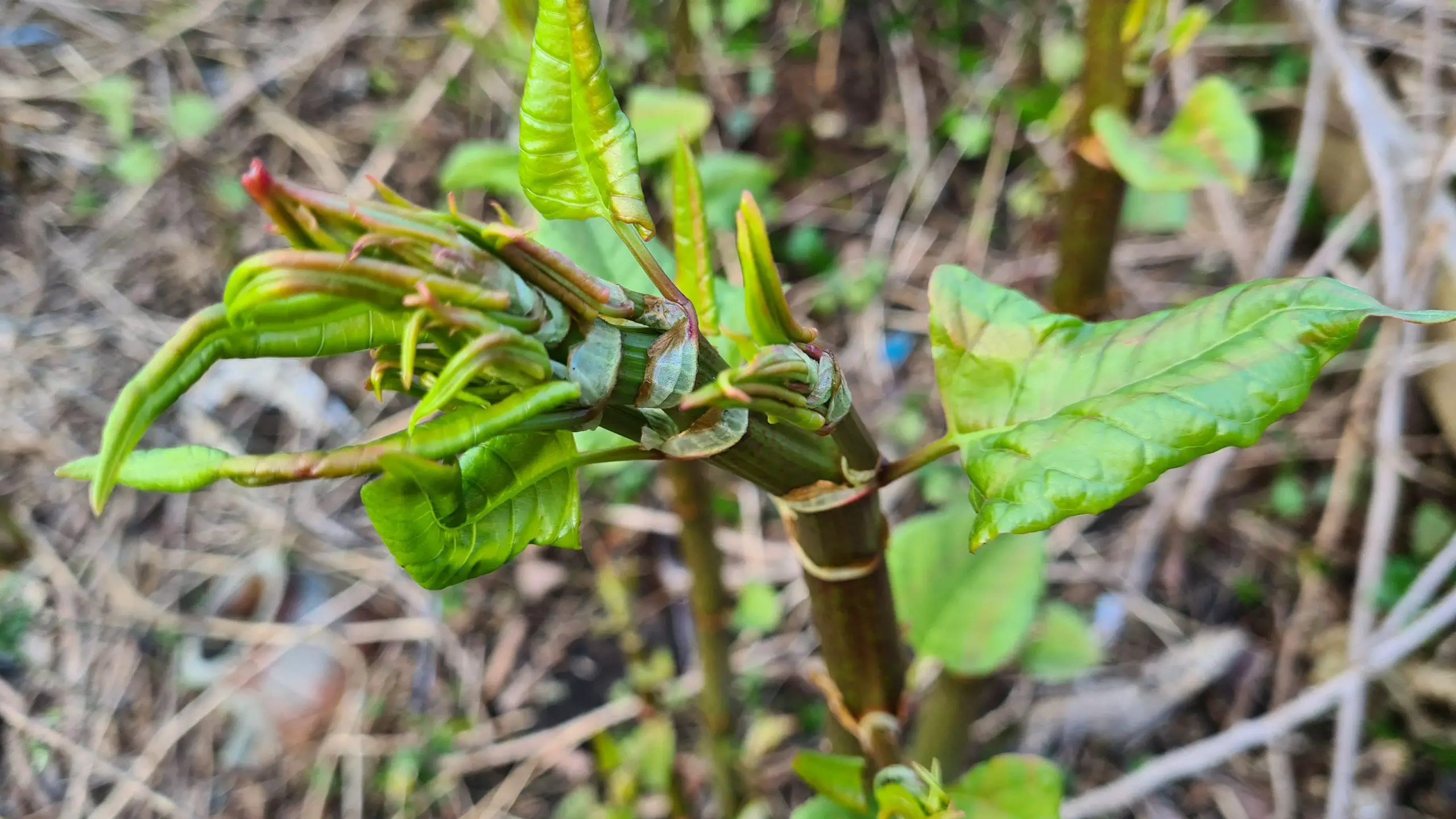
Where does it come from?
The Japanese knotweed was first transported to Britain by adventurer and Botanist Phillip Von Siebold. The botanist discovered the plant growing at the sides of the volcano in the East in the 19th century. The plant gained popularity over the years as it was sold in nurseries across the European continent.
The plant grew profoundly and rapidly, and most people planted it along the pathways to protect them against mudslides. Those who lived in the cities used the Japanese knotweed to beautify their houses and paths. It will be correct to say that within two decades, the plant was found everywhere.
The knotweed grew so fast, and sooner than later, it became an issue along the railway lines, drainage systems, basements, and rivers. This is the situation in most parts of the UK today!
How does Japanese knotweed spread?
The weed produces rhizomes instead of seeds like many other wild plants. Rhizomes are underground stems that send out the root system. This makes it easier for the plant to spread to other areas through the transportation of the top layer of soil.
The root system is widespread, making it harder to know if the ground is not affected.

What does the Japanese knotweed do?
The weed has caused a lot of damage widely in the UK since the 19th century. Will the weed affect your property? The weed proliferates, thus leading to extensive damage to your home. It can clog your drainage systems and discolour walls.
The plant can grow up to 3 cm deep, which makes it even harder to eliminate.
This weed can devalue your property in the long run. Additionally, it will eventually spread to your neighbours, who might take you to court for damage. You may spend a lot in the process if they prove that the weed came from your property.
The presence of this weed will make it harder for you to get a buyer for your property if you so wish to sell. Most buyers will decline the offer until you have a long-term solution in place.
The good news is that most UK property agents involve homeowners and local government in coming up with proper treatment solutions to ensure that homeowners can sell their property at a deserving value.
The impact of Japanese knotweed
Japanese knotweed grows in dense stands, inhibiting the growth of native flowers and shrubs. However, the actual impact of this is unknown because it typically grows in areas that are already degraded and devoid of other plants.
It does change the habitat structure and wildlife of a river bank, which has been known to affect fisheries due to limited access for anglers to fish.
The plant’s rhizomes are extremely tough and re-grow quickly. It has caused problems by growing through house foundations and pavements, resulting in a high economic impact for the plant. It is a legal requirement to remove Japanese knotweed from construction sites; however, doing so is extremely expensive due to the actual removal and disposal of what is classified as contaminated waste.
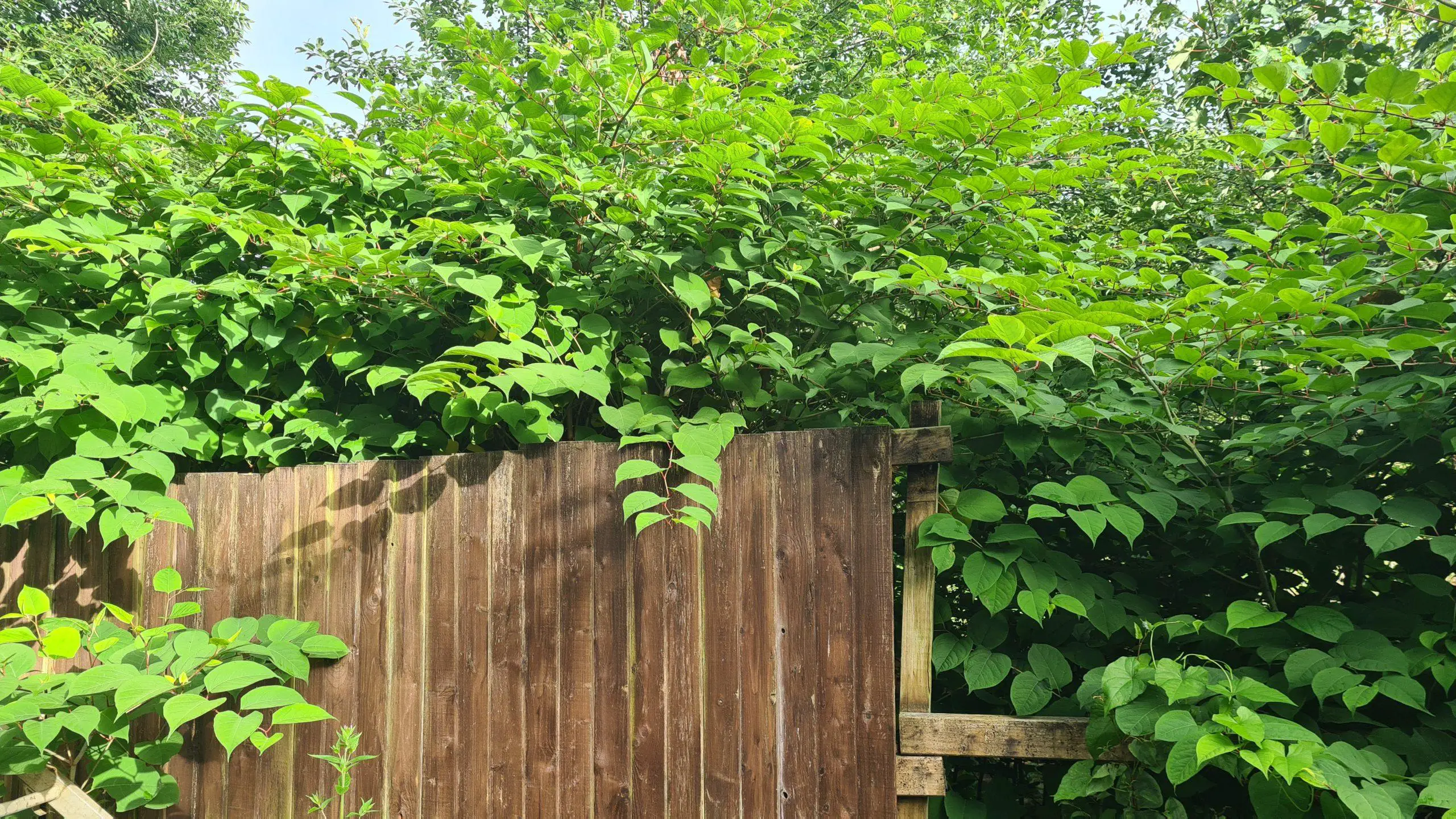
What can you do about it?
It can be very challenging to get rid of the Japanese knotweed. You will need the help of an expert to get the job done correctly. Cutting or digging is not a fruitful method of controlling this plant.
The plant has a comprehensive and established rhizome system that can be buried up to 5 meters underground, making its removal by digging ineffective. The rhizomes always remain in the ground and grow back so fast.
Here are some practical ways to eliminate this knotweed:
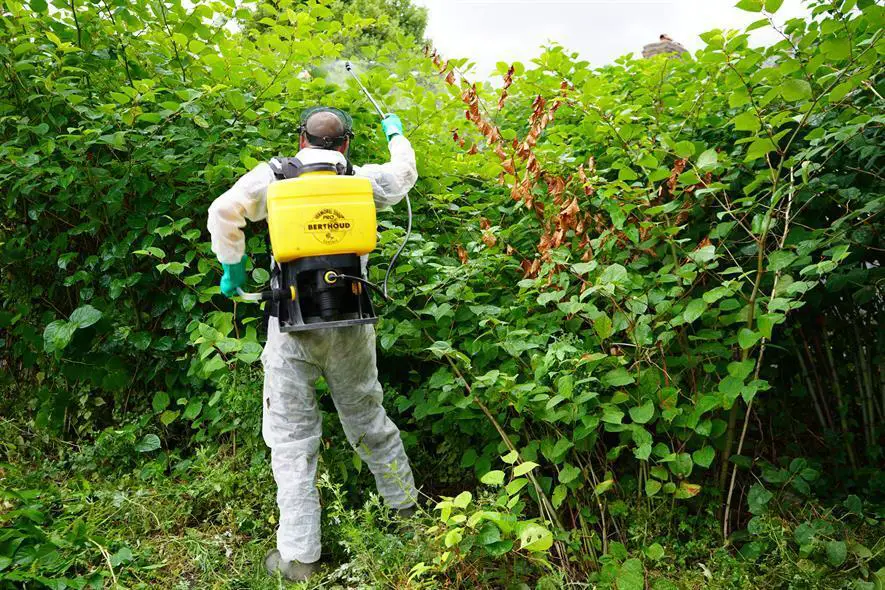
1. Use herbicides
Using recommended herbicides can eventually get rid of this plant for good. Glyphosate–containing products are the most suitable herbicides.
However, these products should be handled by professionals. Ensure that the experts have proper certifications for the job. When appropriately applied at the right time of the year, glyphosate chemicals will eradicate the plant.
It is crucial to remember that for the chemicals to work; they must be applied during the last months of summer or the autumn after the flowering of the weed. It will take at least two years to get rid of the large stands of the plant.
An application can be undertaken in one of two ways:
- Spraying – On larger infestations, it is advisable to spray herbicide from backpack sprayers, which is a more practical method. When treating large areas, while less effective, it is more efficient.
- Stem injection – similar to a water pistol, the herbicide is injected into the stem of the plant and delivered directly into the nervous system of the plant. This is both a targeted and effective method to eliminate Japanese knotweed, however, it is both slow and labour-intensive.
Treatment should be done once a year from late summer to autumn, usually between August and October.
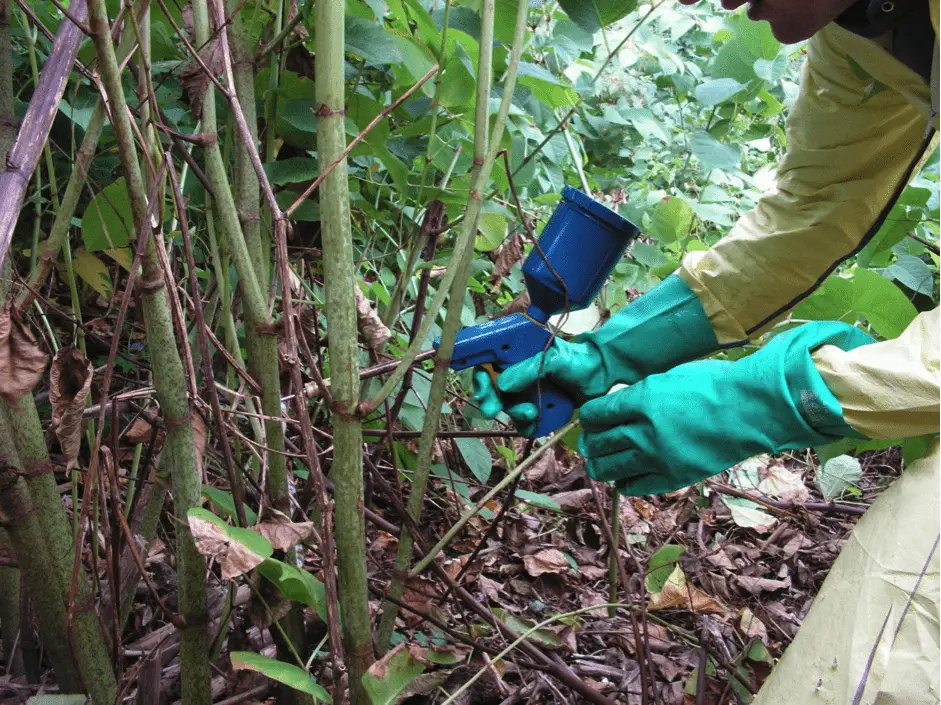
2. Excavation
Most of the home remedies to eliminate this weed end up ineffective. To entirely remove the plant and its roots, you will have to excavate to about 4 meters, followed by laying a weed–proof membrane with new clean soil placed on it.
The excavation method is not suitable in areas with structures or drainage systems. The excavation process is quite disruptive; it is also costly to dispose of contaminated soil. It may not be an effective method if the neighbouring properties are not excavated as well.
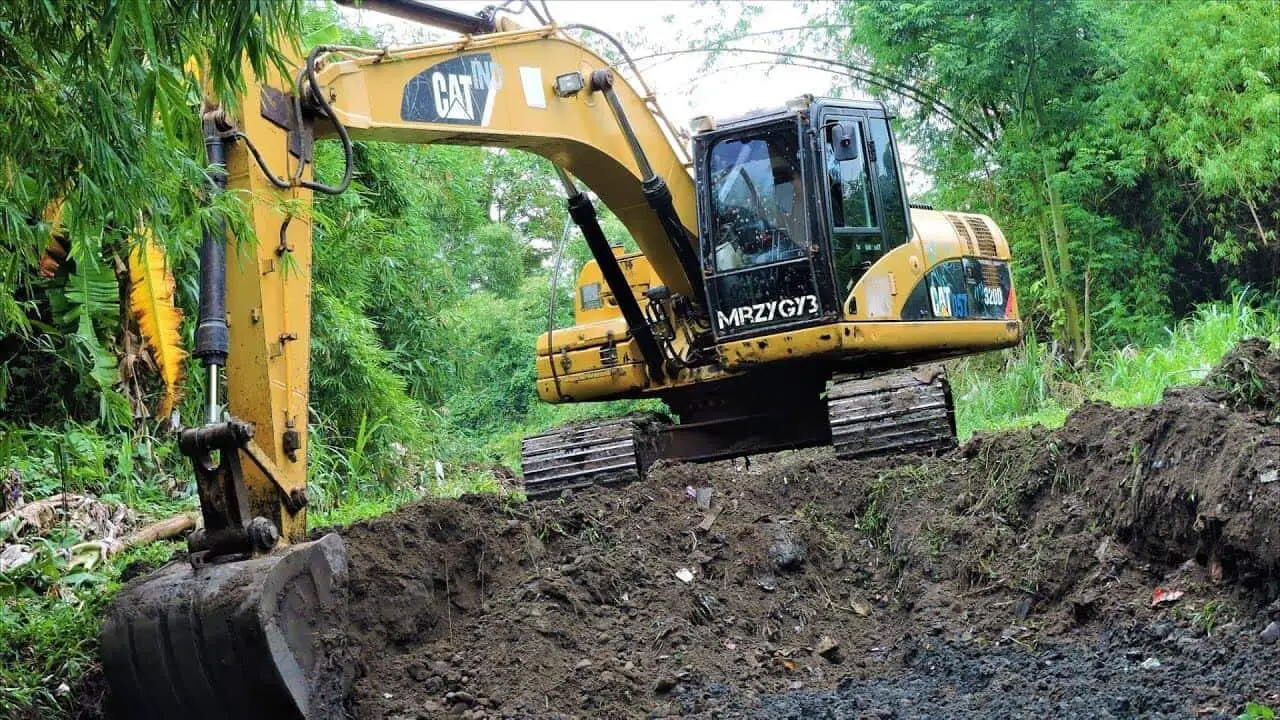
3. Mesh Treatment
Mesh treatment is a new weed treatment technique that uses an aggressive mechanism that forces the plant to be confined in a mesh that is placed where it grows. It is ideal for use on highways, riversides, and railway lines because it has no negative impact on the environment.
Management of Japanese knotweed
During winter we recommend strimming back the dead canes of knotweed, which are hollow and brittle. This allows for easier access on-site the next season in order to continue with the knotweed treatment plan.
Conclusion
The Japanese weed can be challenging to control. However, timely and constant treatments can lower their impact. Different therapies are being developed each day, and we can only remain positive that more effective treatments will be available to homeowners soon.
Want to know more about Japanese knotweed?
Knotweed Removal aims to provide the most up-to-date information, help and advice for YOU to make informed decisions. If you are unsure or uncertain about how to proceed, please reach out to us and we will gladly come back and advise you as best we can.
Governmental advice can be found here and the UK law covering the removal of Japanese Knotweed as stated under the Wildlife and Countryside Act 1981 can be found here.
The best means to contact us is via our email – hello@knotweedremoval.tips
Do not forget we have a library of blogs covering many areas relevant to Japanese Knotweed, our free downloadable How-to Guides and Product Reviews on the latest methods being employed to eradicate or remove Japanese Knotweed.
Knotweed Removal, UK

